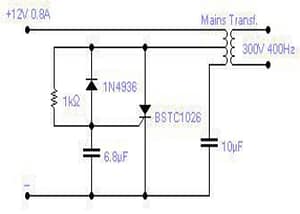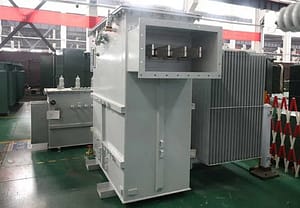Electronic Components Supplier | Transformers, Inductors, Inverters
The electric vehicle (EV) revolution is accelerating, but a critical question remains: how can we ensure this transition is truly sustainable? While EVs produce zero tailpipe emissions, the electricity that charges them often comes from fossil fuels. The answer is shining down on us every day. The integration of solar power into EV charging infrastructure is not just a niche trend; it is the key to unlocking a fully clean, resilient, and cost-effective transportation ecosystem. Solar EV charging stations, utilizing solar electric car charger units, are transforming our parking lots, homes, and highways into personal power plants. This comprehensive guide explores the technology, benefits, and exciting innovations behind solar powered EV charger systems, making a compelling case for why the future of mobility is solar-powered.

Solar Power
1. Understanding Solar-Powered EV Charging: How It Works
At its core, a solar-powered EV charging system harnesses energy from the sun to fuel electric vehicles. The setup can range from simple to complex, but the principle remains the same: convert sunlight into driving power.
1.1 The Core Components
A typical solar electric car charger system consists of three main parts:
- Solar Photovoltaic (PV) Panels: These are installed on a rooftop, carport, or ground-mounted array. Their job is to capture sunlight and convert it into direct current (DC) electricity.
- Inverter: This device converts the DC electricity generated by the panels into the alternating current (AC) electricity used by the grid and most EV chargers.
- EV Charging Unit: This is the solar powered EV charger itself—the station where the vehicle plugs in. It can be a Level 2 charger (faster, common for home and public use) or a DC Fast Charger (ultra-fast, often used in commercial solar EV charging station installations).
1.2 The Flow of Energy: On-Grid vs. Off-Grid
There are two primary configurations for these systems:
- Grid-Tied Systems (Most Common): These systems are connected to the local utility grid. During the day, solar energy powers the solar electric car charger directly. Any excess energy is fed back into the grid, often earning the owner credits through net metering. At night or during cloudy weather, the system draws power from the grid, ensuring your EV is always ready to drive.
- Off-Grid Systems: These require battery storage (like a large Tesla Powerwall or similar unit). Solar energy charges the batteries, which then power the charger whenever needed. This is ideal for remote locations without reliable grid access.
2. Why Go Solar? The Unmatched Benefits of Solar EV Charging Stations
Adopting a solar powered EV charger solution offers a powerful trifecta of economic, environmental, and practical advantages.
2.1 Dramatic Cost Savings and Energy Independence
This is the most compelling driver for many consumers and businesses.
- Slash Fuel Costs: Once the system is installed, sunlight is free. You effectively lock in a low, stable rate for “fuel” for the next 25+ years, insulating yourself from volatile electricity prices and geopolitical energy shocks.
- Maximize ROI with Net Metering: By sending excess solar energy to the grid, you can offset your nighttime charging costs, potentially bringing your net electricity cost for charging to zero.
- Government Incentives: The combination of federal tax credits (like the ITC in the U.S.), state rebates, and local incentives for both solar panels and EV chargers can reduce the upfront cost by 30% or more.
2.2 The Ultimate Green Credential: Zero-Emission Driving
A solar EV charging station completes the sustainability loop.
- Well-to-Wheel Emissions: An EV charged by coal-powered grid electricity still has a carbon footprint. An EV charged by a solar electric car charger operates on 100% clean, renewable energy, virtually eliminating its well-to-wheel emissions.
- Reducing Grid Strain: By generating power on-site, these stations alleviate demand on the central grid, especially during peak hours when electricity is most expensive and carbon-intensive.
2.3 Enhanced Resilience and Future-Proofing
Solar charging adds a layer of security and modernity.
- Power During Outages: Systems equipped with battery storage can continue to charge your EV even during a blackout, turning your car into a reliable backup power source for your home (with bi-directional charging technology).
- Future-Proof Investment: As governments worldwide move to decarbonize the grid, investing in solar now future-proofs your transportation energy needs against future carbon taxes or regulations.
3. Innovations and Hot Trends in Solar Charging
The market for solar powered EV charger technology is rapidly evolving, moving beyond simple setups to integrated smart systems.
3.1 Solar Canopies and Carports
The most visible trend is the solar EV charging station built as a canopy or carport. These structures provide dual functionality: they generate large amounts of electricity while providing shade and weather protection for vehicles, potentially reducing the need for air conditioning and increasing charging efficiency.
3.2 Bi-Directional Charging and Vehicle-to-Grid (V2G)
This is the true game-changer. Next-generation solar electric car charger units are being developed with V2G capability. This allows your EV battery to:
- Power Your Home: Use your EV as a backup battery for your house during an outage or at night.
- Support the Grid: Sell stored solar energy from your car back to the grid during periods of high demand, creating a potential revenue stream.
3.3 Integrated All-in-One Solutions
Companies are now offering streamlined, all-in-one solar powered EV charger solutions that combine a small solar array, a battery storage unit, and the charger into a single, sleek post. This simplifies installation and is perfect for residential driveways and small businesses.
4. Is a Solar EV Charging Station Right for You? Key Considerations
Before investing, consider these factors:
- Sunlight Exposure: Your location and available space (roof, yard) need adequate sun exposure to make the system viable.
- Upfront Investment: While costs have plummeted, a full system requires a significant initial investment, though it pays back over time.
- Your Driving Habits: Calculate your daily kWh usage for driving to right-size your solar array.

Integrated All-in-One Solutions
Conclusion: Driving on Sunshine is Within Reach
The synergy between solar power and electric vehicles represents the pinnacle of clean technology. Solar EV charging stations are no longer a futuristic concept but a practical, affordable, and powerful solution available today. By choosing a solar electric car charger, you are not just filling your battery; you are taking a definitive step towards true energy independence, environmental stewardship, and long-term economic savings. The road to a sustainable future is paved with sunlight, and it’s time to start driving on it.
Luoyang Datang Energy Technology Co., Ltd. is a high-tech enterprise integrating R&D, manufacturing and supply of power equipment such as transformers, new energy components, distribution cabinets and inverters. With technological innovation as the core, we focus on creating high-reliability and high-performance power solutions to serve global customers. With a strict quality control system and international standard certification, we continue to output excellent products and enable customers to build safe and stable power systems.
If you have any questions, please feel free to contact us!
Tel.: 0086-173 9637 0277
WeChat: 0086-173 9637 0277
WhatsApp: 0086-173 9637 0277
Email: sales@pddn.com







